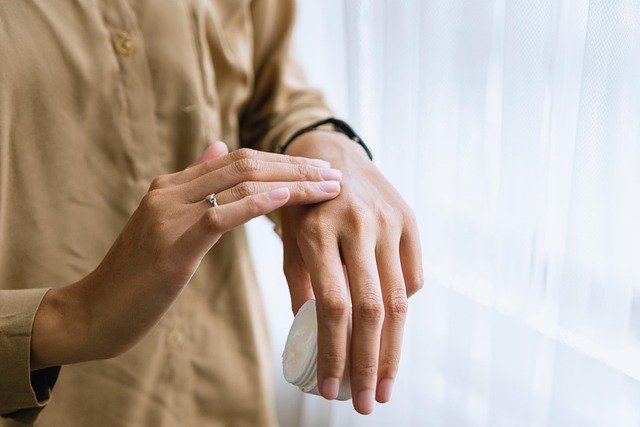Environmental Impact and Disposal of Common Soaking Additives
Foot soaks use a wide range of additives—from salts and essential oils to herbal extracts and colorants. Understanding how these ingredients enter wastewater, affect aquatic life, and interact with household plumbing can help people choose safer options and disposal methods for wellness routines.

Foot soaks often include salts, baking soda, essential oils, fragrance compounds, and herbal extracts; each component interacts differently with water systems and the environment. When drained, dissolved salts and synthetic fragrances pass into household wastewater, while oils can adhere to pipes or form films in sewers. Some botanical extracts contain tannins or pigments that affect water color and biological oxygen demand. Considering the lifecycle of an additive—from production and use to disposal—helps clarify environmental trade-offs and informs safer choices for personal hygiene and wellness routines.
This article is for informational purposes only and should not be considered medical advice. Please consult a qualified healthcare professional for personalized guidance and treatment.
How do antioxidants and aging ingredients behave?
Antioxidant-rich extracts are increasingly added to foot soaks for perceived skin benefits tied to aging and cellular protection. Many antioxidant molecules are water-soluble and biodegrade relatively quickly in municipal treatment plants, but not all. Concentrated botanical extracts may contain compounds that resist breakdown or alter microbial communities in sewage. In rural areas that rely on septic tanks, persistent compounds can accumulate and affect soil microbiota. When selecting antioxidant additives, prioritize formulations with clear ingredient lists and minimal synthetic stabilizers to reduce environmental persistence.
What are the hygiene and disposal considerations for oils and fragrances?
Essential oils and synthetic fragrances improve scent and perceived cleanliness but create distinct disposal challenges. Oils can bind to sediments, clog drains, and reduce oxygen availability in receiving waters, impacting aquatic life. Fragrance chemicals sometimes contain synthetic musk compounds that are slow to degrade and can bioaccumulate in wildlife. For hygiene-conscious users, mechanical removal (wiping excess oil off skin before rinsing) and diluting soaks with larger volumes of water can reduce concentrated discharges. Proper disposal practices—avoiding direct outdoor draining and following local wastewater guidance—limit downstream impacts.
Are there dermatology, melanin, and sunlight interactions to consider?
Topical additives in foot soaks may interact with skin in ways relevant to dermatology, melanin levels, and sun exposure. Some botanical photosensitizers increase sensitivity to sunlight; users with higher melanin or lighter skin tones should be aware of potential irritation or uneven pigmentation after use. Sunscreen or topical dermatology products applied before a soak can be washed off into wastewater, where active UV-blocking compounds may affect aquatic organisms. When concerned about skin reactions, a consultation with a dermatologist before trying new soak additives is prudent to balance wellness benefits and safety.
How do oral, dental care, hospital, or procedure-related additives fit in?
Certain soaks marketed for medical or cosmetic recovery—following dental procedure visits, hospital stays, or surgeries like liposuction—may include antiseptics or medicated salts. Agents used in clinical settings are formulated for antimicrobial activity and can be more persistent or toxic to microorganisms in wastewater systems. If foot soaks are recommended after a dental care appointment or other procedures, follow professional disposal instructions and avoid pouring concentrated medicated solutions down household drains. Discarding such materials through designated medical or pharmaceutical disposal programs is often safer for public infrastructure.
What about links to weight, teeth, nose, oral hygiene, and other wellness themes?
Foot soak marketing sometimes cross-references broader wellness topics—weight management, oral hygiene, or respiratory care (nose) routines—though additives intended for one body area should not be repurposed indiscriminately. Ingredients safe for topical foot use can be inappropriate for oral or nasal exposure. Improper disposal of multi-use products can introduce active compounds into the environment; for example, fluorinated or antimicrobial agents related to oral care may persist in water. Consumers should use products only as intended and dispose of leftover or concentrated solutions per label or local guidance.
What technology, sunscreen, and consultation steps reduce environmental harm?
Emerging wastewater technology improves removal of certain fragrances and micropollutants, but treatment capacity varies by locale. Sunscreen chemicals and some UV filters resist degradation; avoiding washing off large quantities into drains lowers environmental loading. Practical consultation steps include checking product ingredient lists, using smaller additive concentrations, and choosing biodegradable or certified eco-friendly formulations. Before after expectations for skin results should be modestly framed—short-term wellness gains do not justify routine release of persistent chemicals into wastewater.
Conclusion Choosing foot soak additives with attention to biodegradability, concentration, and intended use reduces environmental impact and protects household plumbing and local water quality. Mindful disposal—dilution, wiping off excess oils, following medical disposal guidance when medicated agents are used, and consulting healthcare professionals when skin or clinical concerns exist—supports both personal wellness and ecological responsibility.




